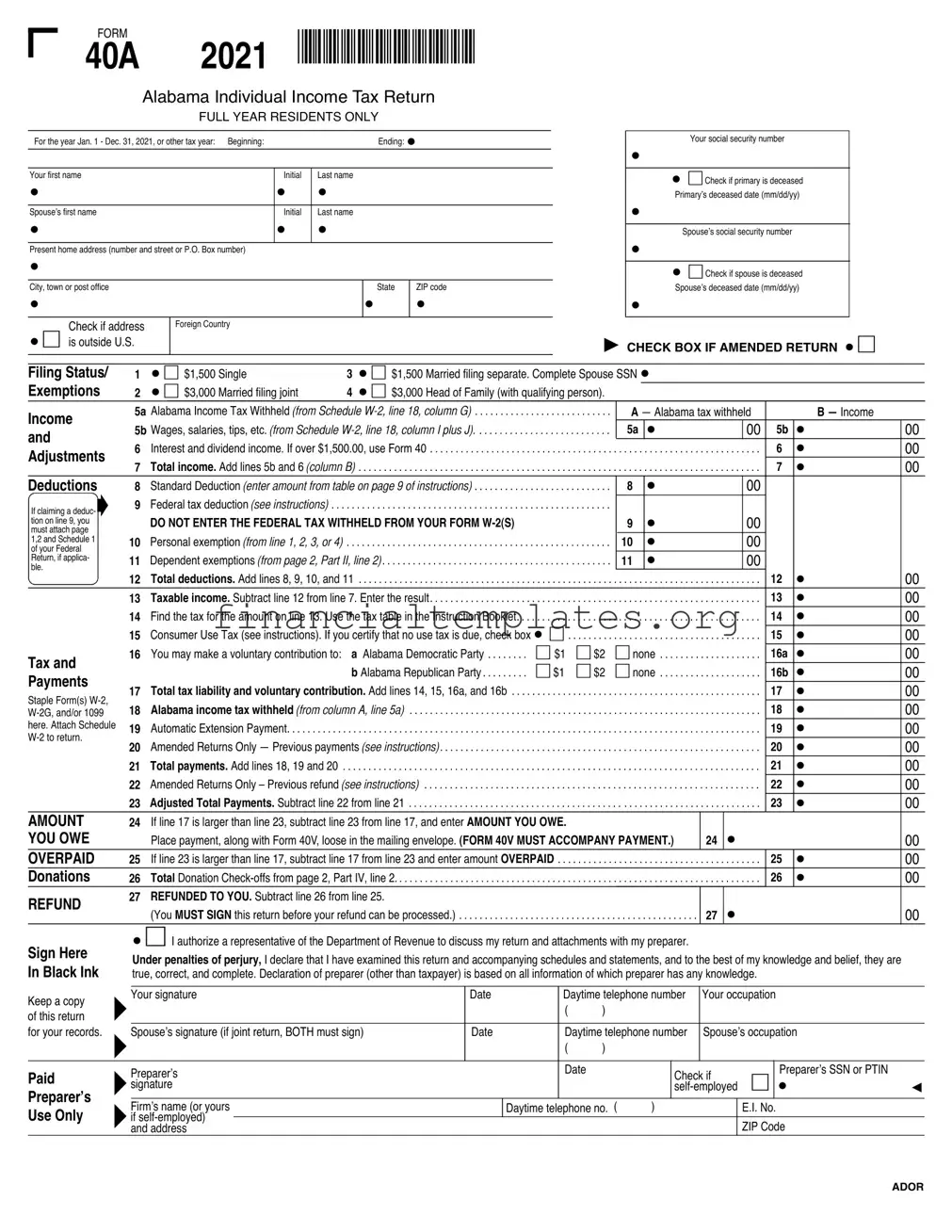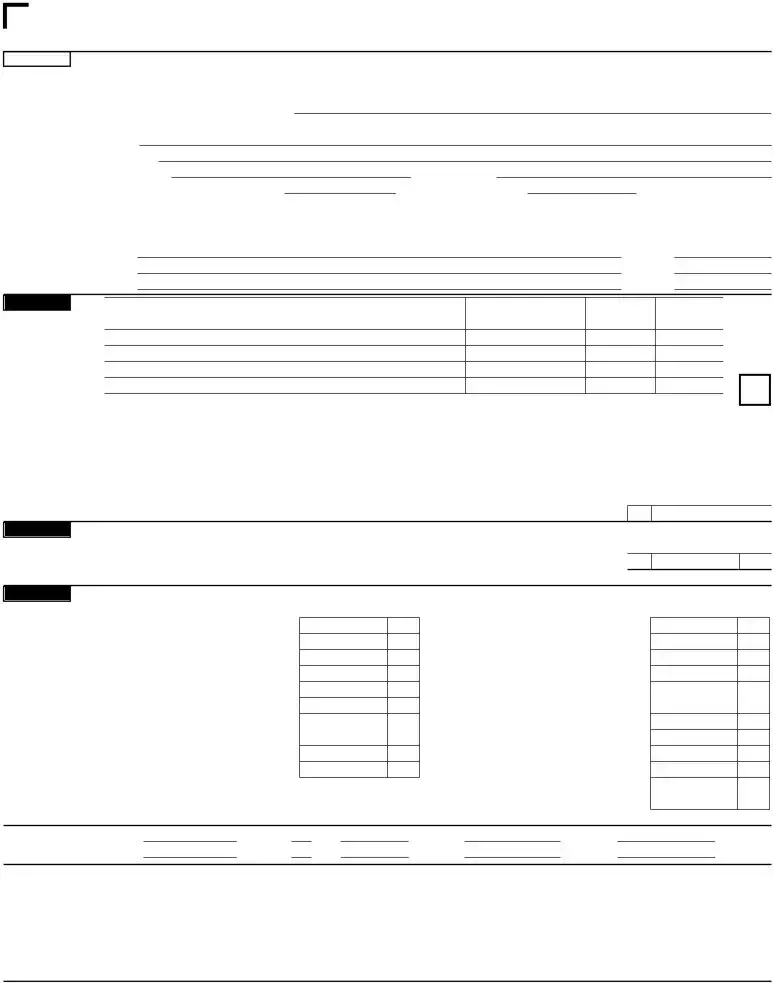The U.S. Federal Income Tax Return, specifically Form 1040, shares numerous similarities with the Alabama State Tax Return 40A form. Both require the taxpayer's personal information, including their name, social security number, and address. They also provide sections to report income from various sources, such as wages, salaries, tips, dividends, and interest. The forms feature deductions, exemptions, and credits, leading to the calculation of taxable income. Furthermore, they include spaces for voluntary contributions to specified funds or programs and come with instructions for attaching other necessary documentation.
State Tax Return forms from other states, like the California 540 Form or the New York IT-201, also parallel the Alabama State Tax Return 40A. These documents are designed for reporting individual income within their respective states and include sections for personal information, income reporting, deductions, and tax calculations. Despite differences influenced by state-specific tax laws, the structure and purpose align closely, guiding taxpayers through compiling their financial activities within the state for the year.
The 1040EZ, although now retired, offered a simplified structure for filing federal taxes and shares its ease with the Alabama 40A form for straightforward tax situations. Both were designed for taxpayers with simpler financial situations, lacking significant deductions, credits, or types of income outside of wages, salaries, and interest. The intent behind forms like the 1040EZ and the Alabama 40A is to streamline the tax filing process for eligible individuals.
W-2 forms, required attachments for both federal and state tax returns, including the Alabama 40A, contain information on an employee's income and tax withholding. This form serves as a primary document that taxpayers use to report wages and taxes withheld, which directly informs entries in the income sections of their tax returns. Its universal application underscores its role in ensuring accurate income reporting for tax purposes.
Form 1099, encompassing various types such as the 1099-INT for interest or 1099-DIV for dividends, is analogous to parts of the Alabama 40A form that capture income from sources other than wages. These documents are crucial for accurately reporting different types of income on both federal and state tax returns, effectively influencing the computation of taxable income and eventual tax liabilities.
Charitable contribution forms or receipts, while not official tax forms, have a close relationship with sections of the Alabama 40A that allow for voluntary contributions. Taxpayers use these documents to substantiate charitable donations claimed on their tax returns, echoing the process where individuals elect to contribute to state-run programs or efforts directly through their tax forms.
The Federal Schedule A itemized Deductions form intersects with the Alabama 40A form through its function in determining the deductions taxpayers may claim. Although Schedule A is specific to federal returns, it influences the final tax liability by allowing the taxpayer to itemize deductions — including taxes paid to state and local governments, paralleling the deductions section of the Alabama form.
Form 40V Payment Voucher is an integral part of the Alabama 40A package for those owing taxes, similar to the federal payment voucher, Form 1040-V. These documents facilitate the process of submitting payment alongside the return, specifying the amount of tax owed based on the calculations done in the tax forms. By providing structured information to the tax agencies, they ensure accurate processing of payments and correct crediting to taxpayer accounts.




 00
00